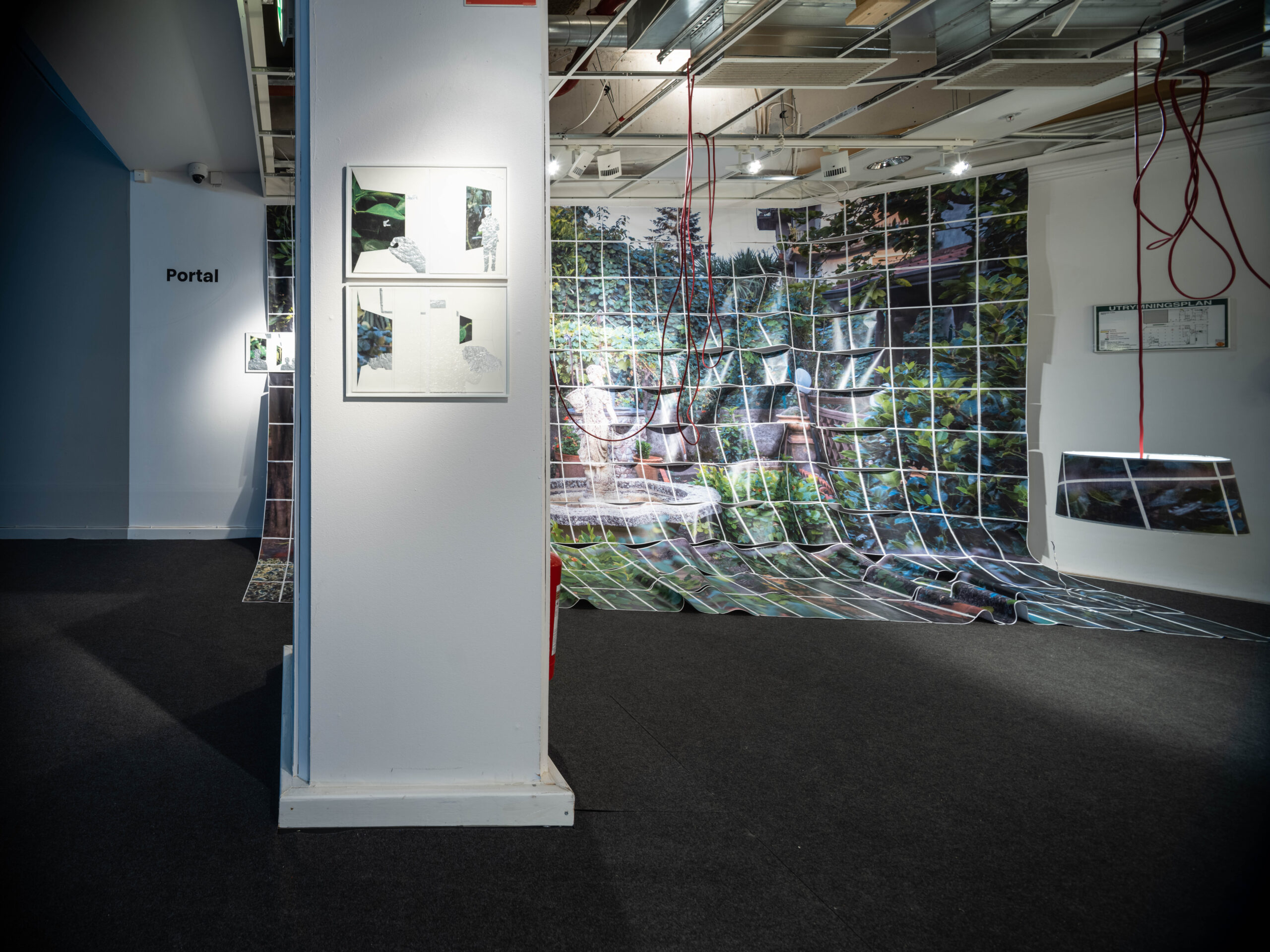
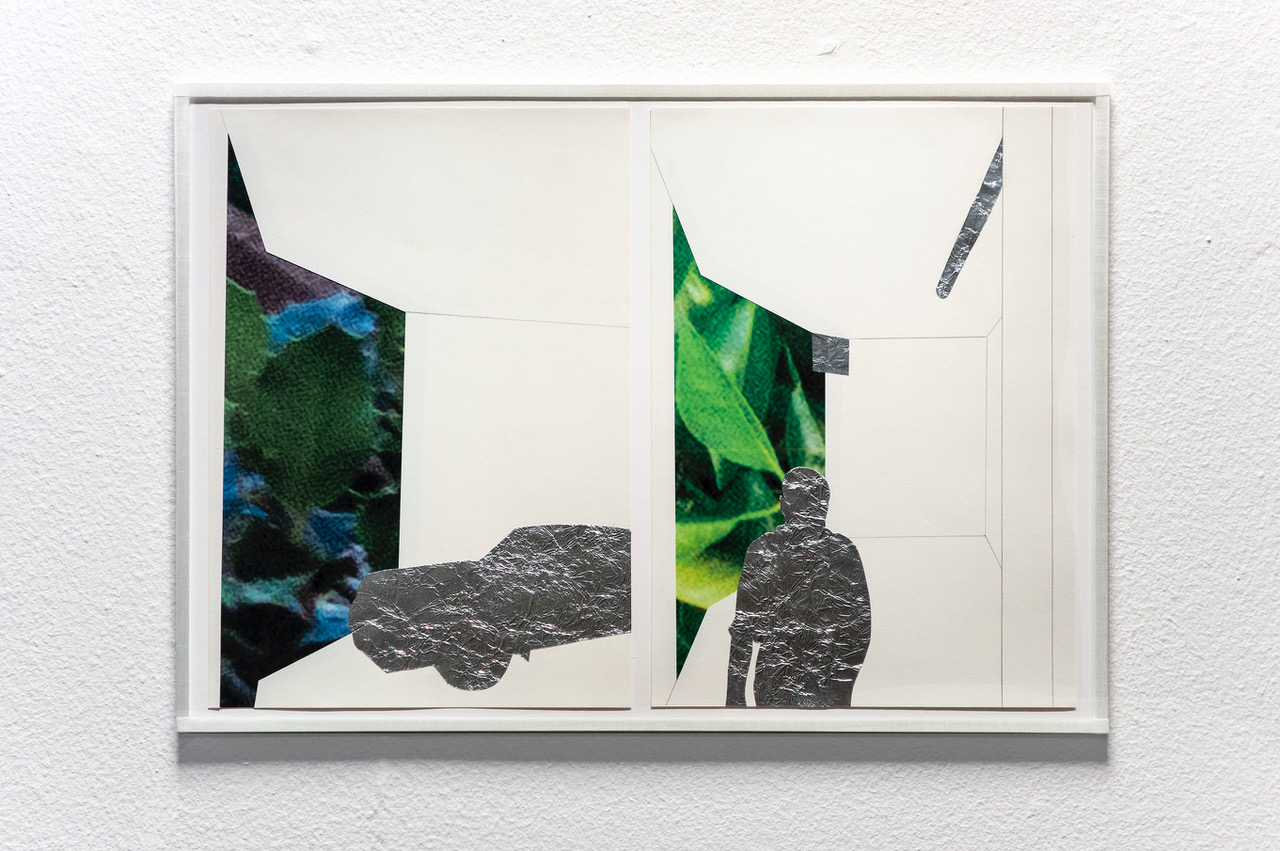

Igor Blomberg Tranaeus began his work on the exhibition in Portal based on sketches, pictures and drawings he brought with him when he visited the space in December 2022. He decided early on to work on site for a longer period, exploring how disparate ideas and drafts to works could come together. The ceiling of the room became a starting point, the inner ceiling was lifted out and the interior of the house was exposed above – ventilation that breathes like lungs and water pipes that form a kind of blood circulation in the body of the house. By removing the inner ceiling, the room opens up both on a physical and mental level. The feeling of an archaeological excavation with the illuminated cement beams above the ceiling revealing 50 years of cultural production is liberating – she is alive, Luna!
Working associatively by processing ideas as they arise generates controlled chaos. The large wall consists of 312 A4 paper sheets printed on the office printer and carefully taped together to form a giant puzzle. The image comes from Igor’s private archive, where he collects references and inspiration. This very motif is from Sicily, the garden can symbolize the contradiction between nature’s organic power and man’s attempt to discipline it – to clear weeds, trim bushes, cut lawns – all expressions of a will to master nature’s persistent life, to organize it into systems which suits our human rationality. The shelf system on the wall across can be seen as a symbol of this arrangement.
Red-colored cables dangle from the ceiling, which conduct current to the lamps. In film scenes lamps, light and architecture sometimes embody psychic states. Director David Cronenberg’s films often explore a gridded, dissolved reality, with slightly absurd elements. In Portal, it’s hard not to think of the red colored cables as veins. In some places there are thin sculptures made of aluminum wires. Perhaps they are snakes, a biblical trope where the snake appears in the courtyard, the garden, and deceives us with its cunning. To know too much and thereby renounce the faith, and thereby to be condemned by God to crawl on the ground and bear the sin of all man. The snakes look curiously and somewhat skeptically around the room and become a container for the artistic choices and charges that the objects around are attributed in this narrative.
The exhibition also includes several silhouettes in aluminum foil. These are taken from movie stills. The silhouettes are also represented in the five collages mounted behind glass placed around in the exhibition. The collages are in a way the basis of the exhibition, in them the photograph on the wall, drawings of the rooms and miniature silhouettes in aluminum foil – these figures that have stepped outside the glass and are now portrayed in different formats around the room.
At the far end of the exhibition hangs a work with a square shape of foil, a reference to the artist Kazimir Malevich’s painting Black Square. The painting was shown for the first time in 1915 in the exhibition The Last Futurist Exhibition of Paintings, 0.10, and has often been called a kind of “zero point” for painting. The exhibition became the starting point for non-objective art called “Suprematism”, in the wake of which we now, over a hundred years later, still live. Igor Blomberg Tranaeus shows how new relationships between images, objects and ideas can arise, unite and refine.
Maja-Lena Molin, Artistic Director, Södertälje konsthall

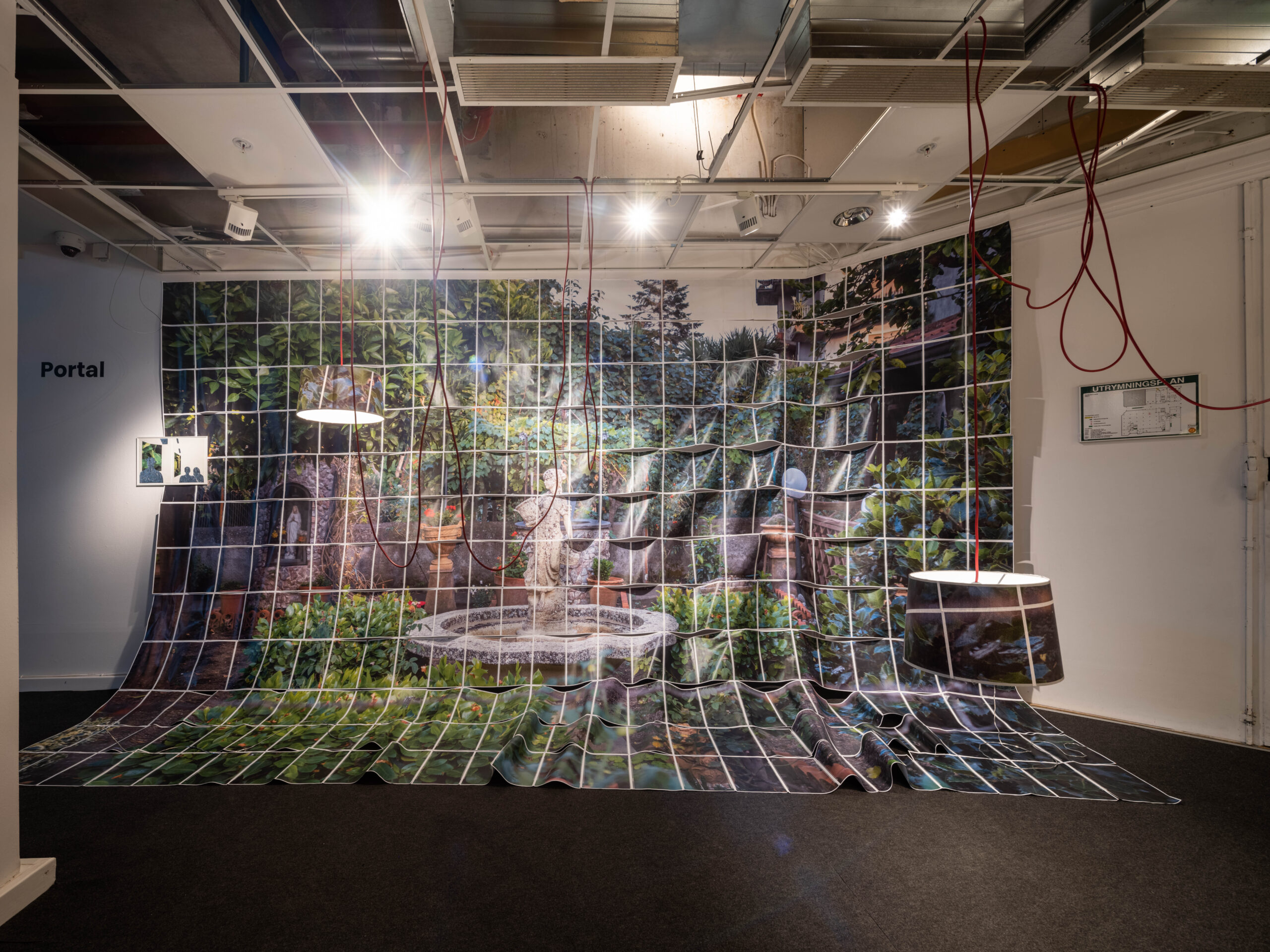
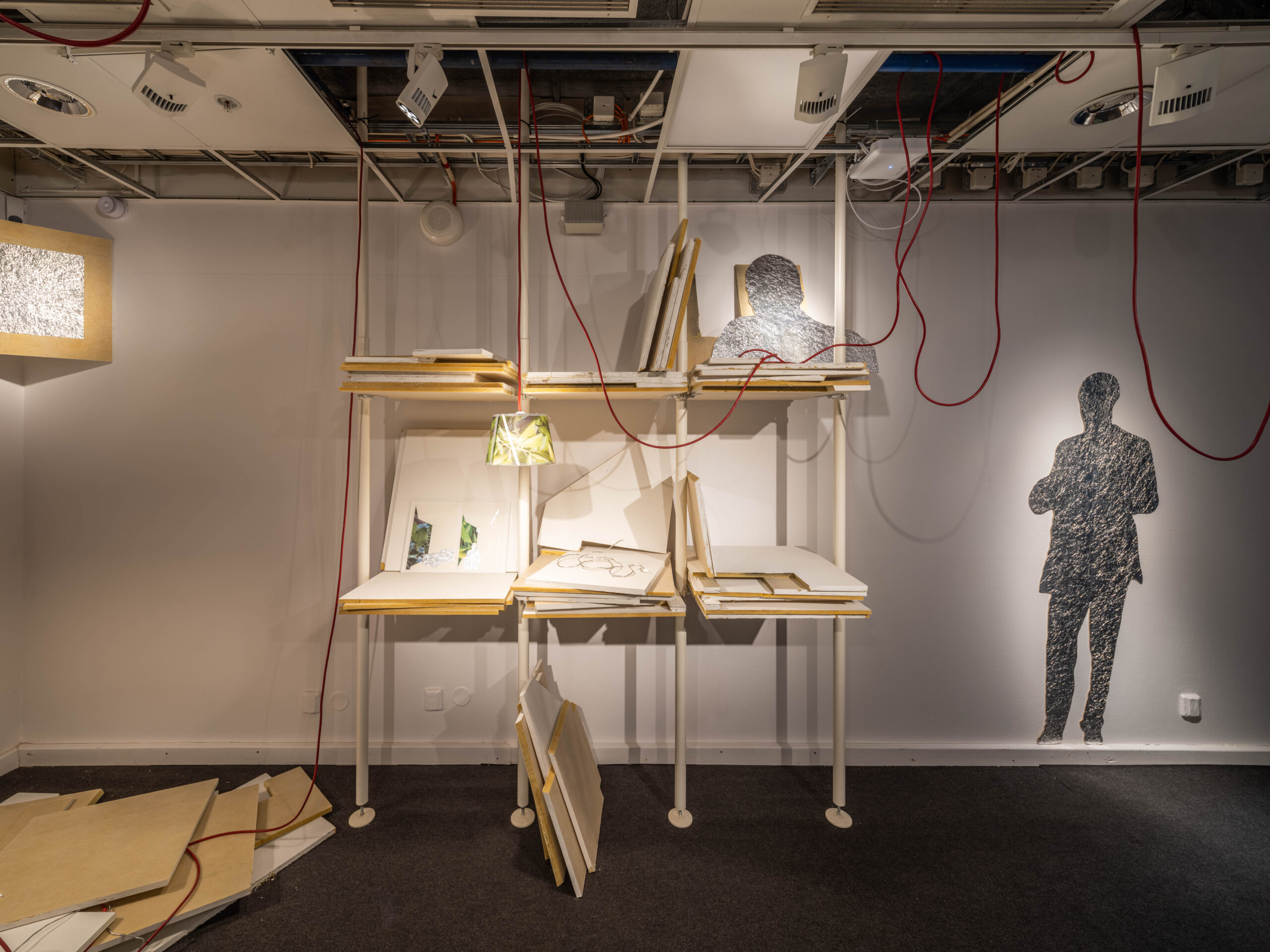
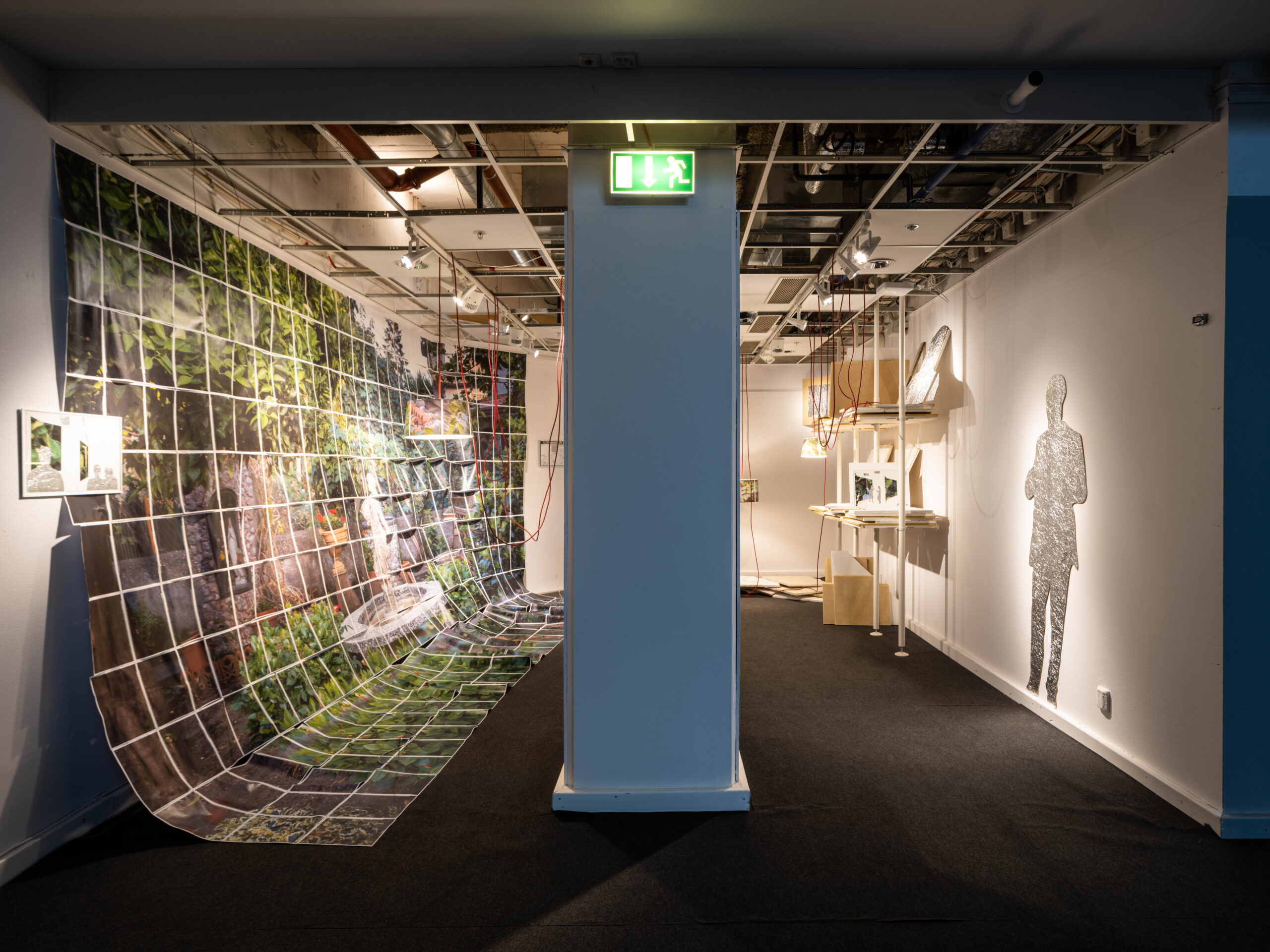
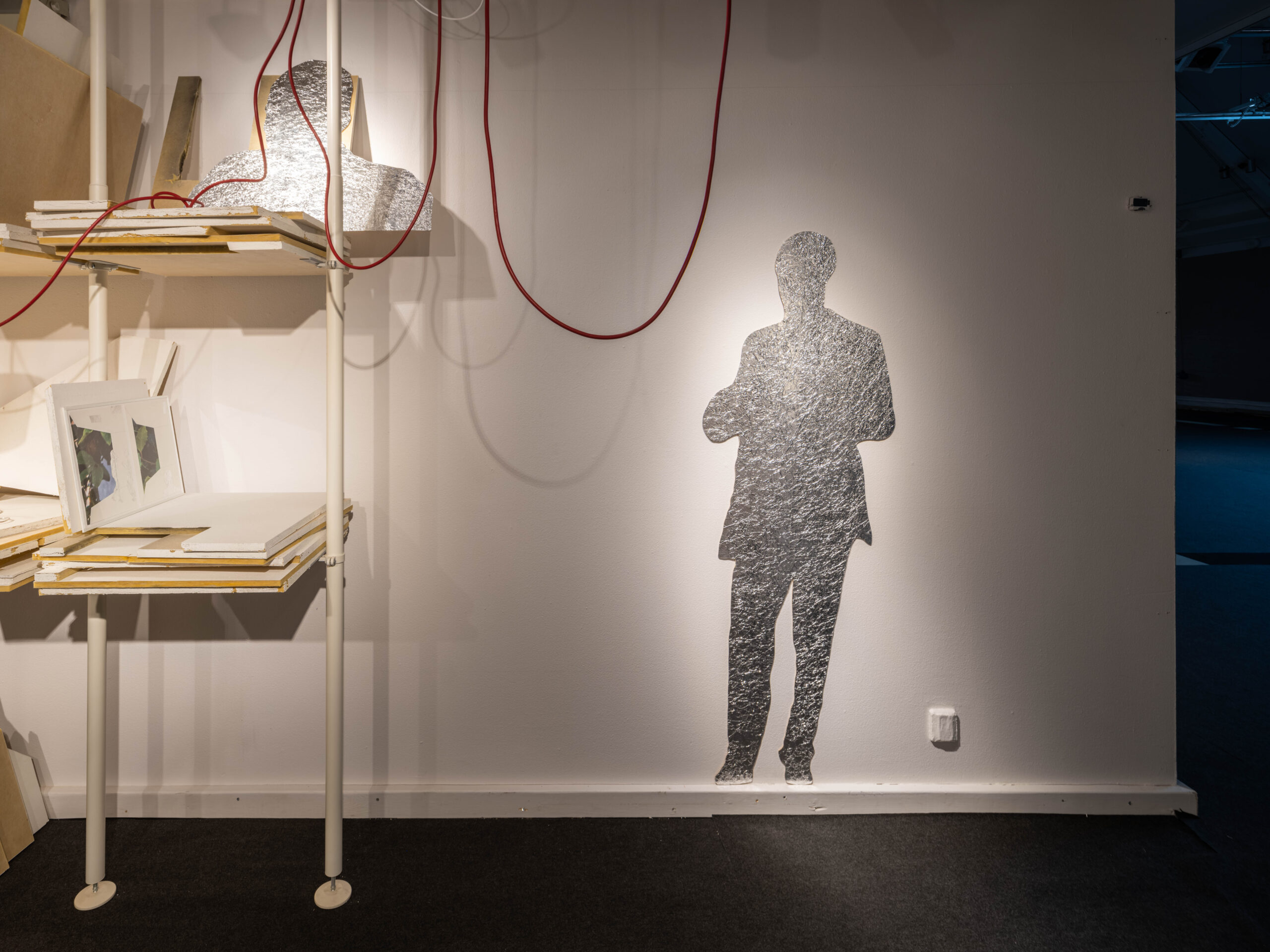
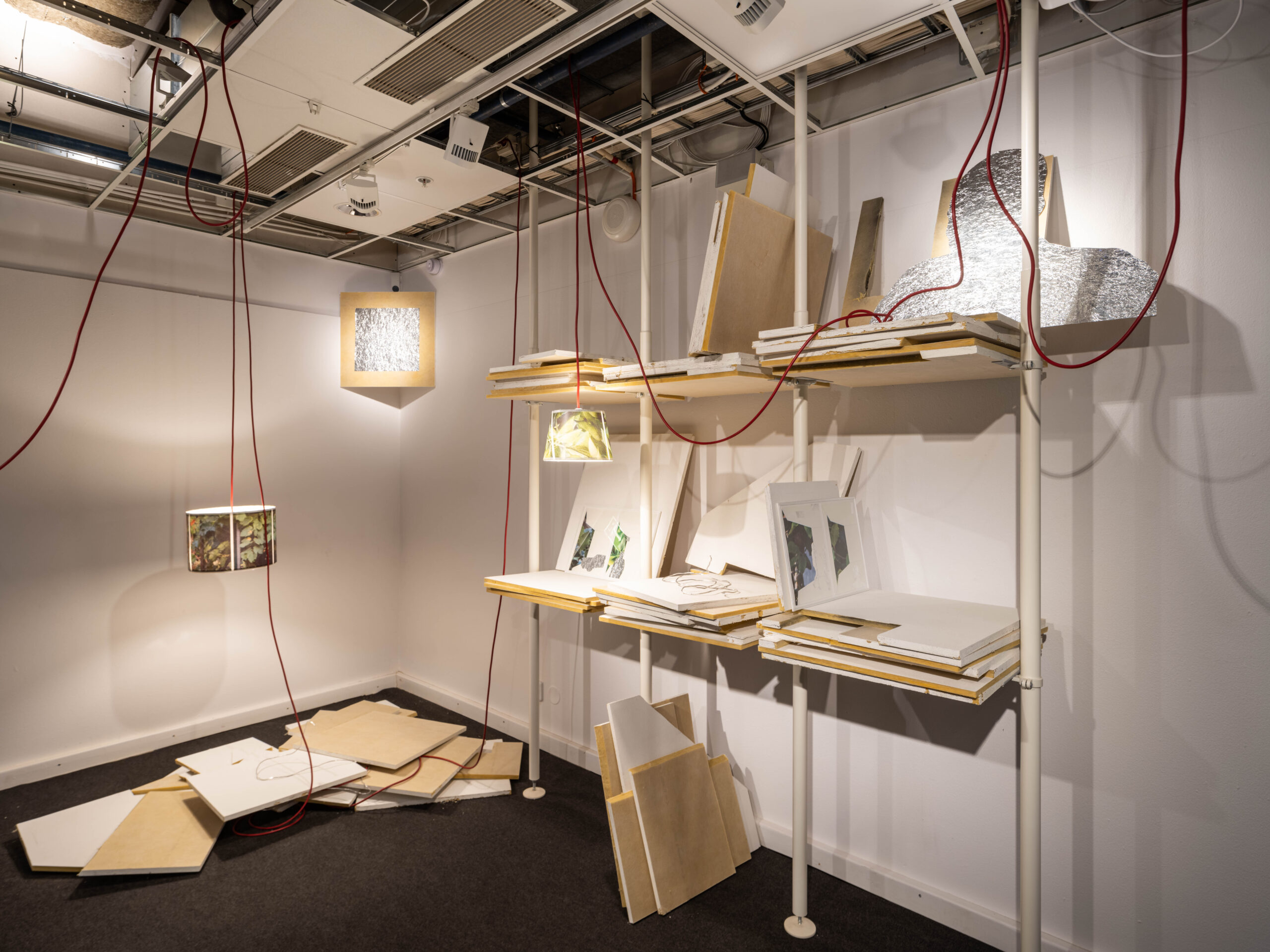

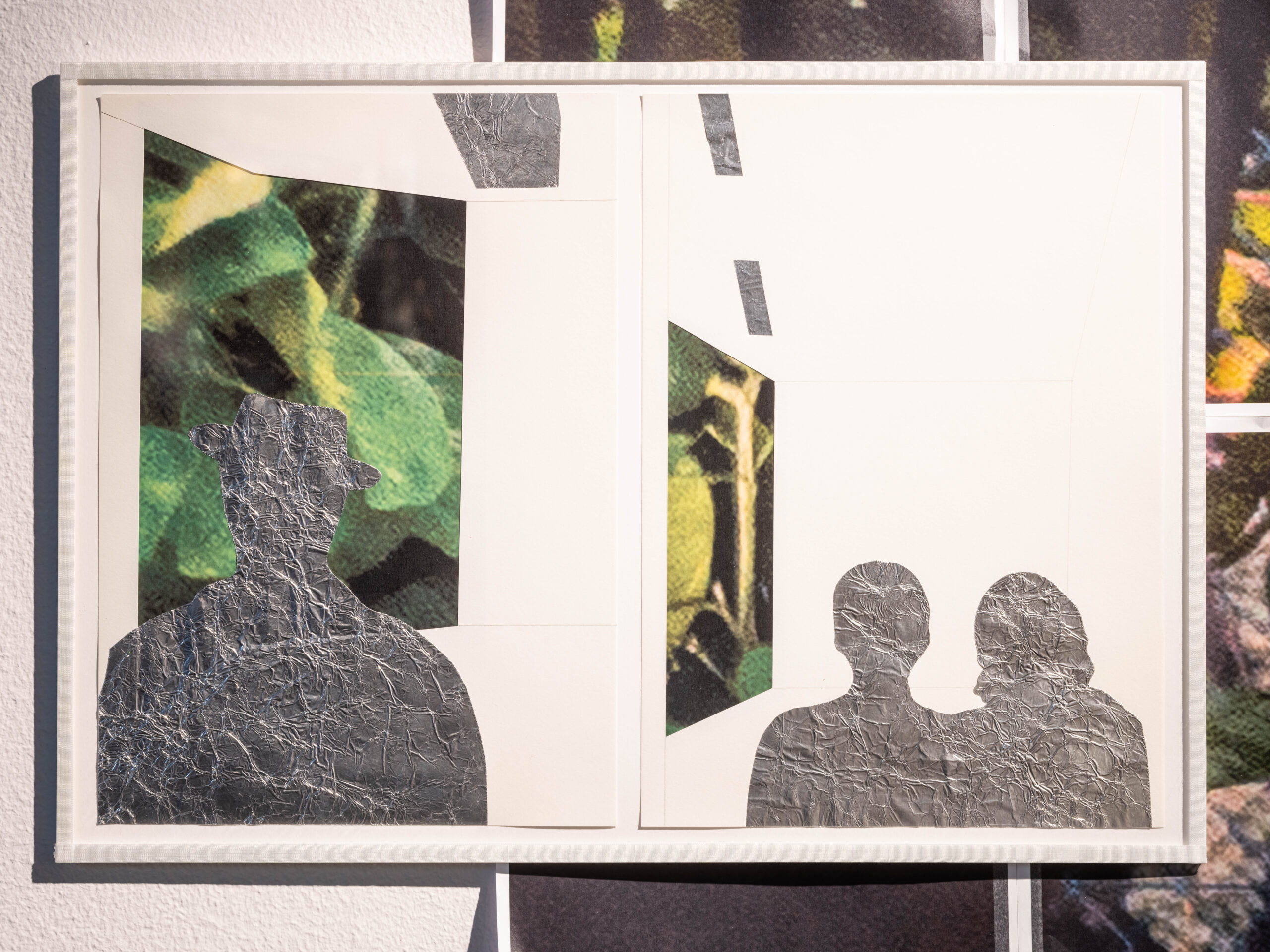
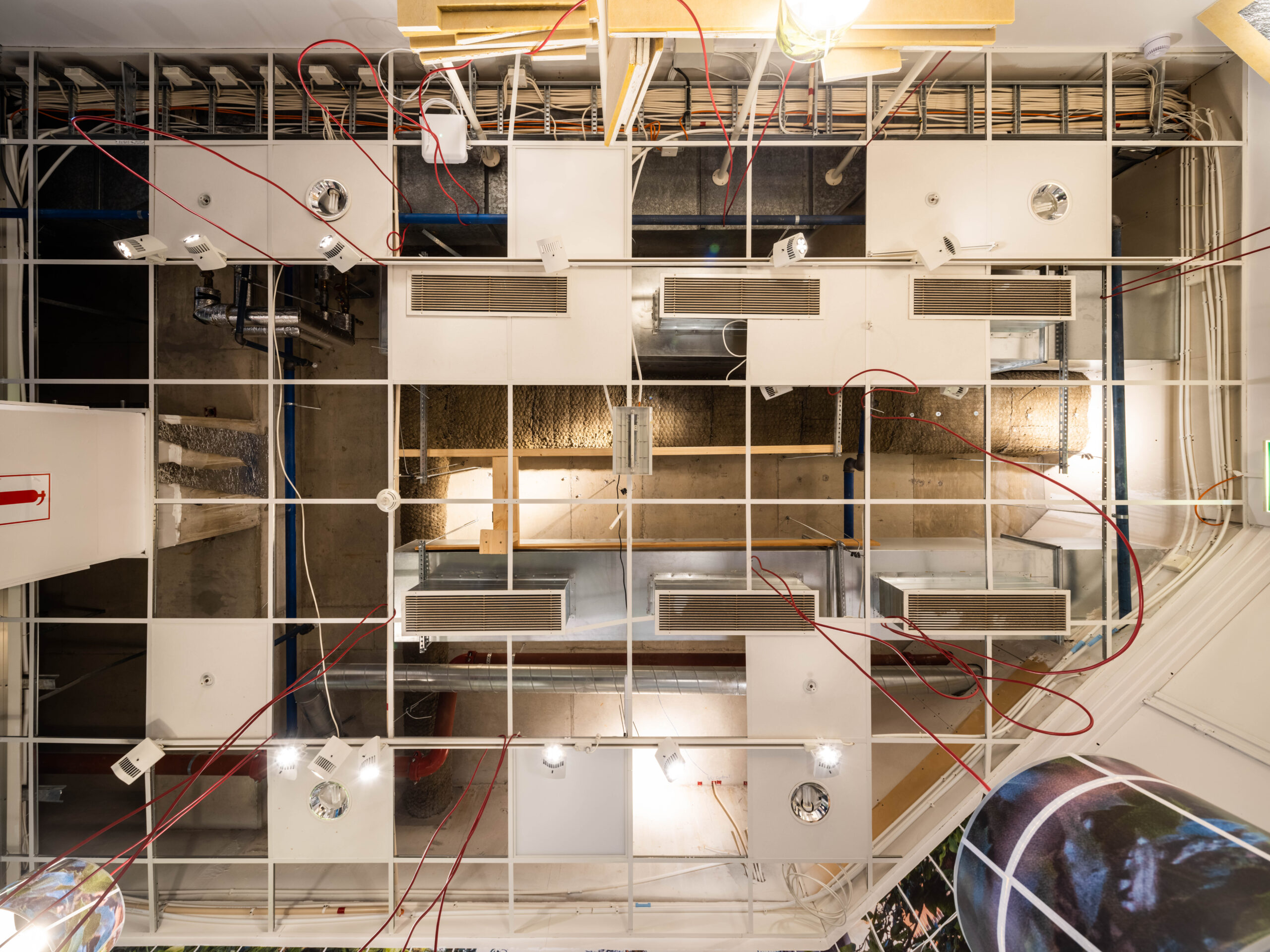
Photo: Jean-Baptiste Béranger